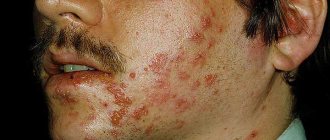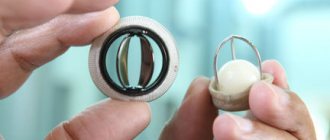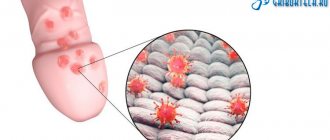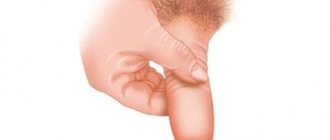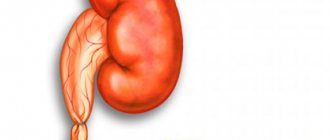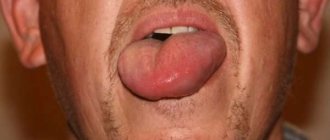Varicoceles are varicose veins that surround the spermatic cord and testicles of the male genital organs. Today this pathology occurs quite often in men. According to statistics, varicocele affects 17-22% of adult men, and 50% of men have this disease with a diagnosis of infertility. As a rule, young men at the beginning of puberty are susceptible to this disease. Most often, the left testicle suffers from varicocele and much less often the right one. Let's look at the causes and symptoms of varicocele, photos before and after surgery, and the need to treat the disease.
Varicocele and infertility
Infertility affects about 15% of couples of reproductive age and is one of the main problems of modern health care.
According to statistics, in 40-50% of cases, the inability of a couple of childbearing age to conceive a child is the result of the male type of disease. Idiopathic infertility, in which sperm has abnormal parameters for no specific reason, is the most common factor of the disease. Another common cause of male infertility is varicocele, which, according to a study among the European male population, occurs in 16.6% of cases. The first studies on the presence of varicocele in the testicles in men were described by the Greek physician Celsus, who Fr. The first mention of the effect of varicocele on fertility was made at the beginning of the 20th century, when surgical intervention was recommended to patients to improve sperm quality. In 1952, Dr. Tulloch first reported that after ligation of dilated veins in a patient with azospermia (lack of sperm in semen), there was an increase in sperm concentration to 27 x 10 / ml. Since then, many studies have focused on the diagnosis and treatment of varicoceles to increase fertility, but none have provided a clear answer regarding the relationship between varicoceles and infertility.
Is it possible to cure varicocele without surgery?
Men often ask the question: if a varicocele of the left testicle is detected, is treatment without surgery a dream or a reality? Most doctors are of the opinion that only surgery can eliminate this disease and no medications can cure it. However, the operation only eliminates the consequences that have occurred. Therefore, many believe that for varicocele of the left testicle, treatment with folk remedies and special exercises bring tangible results. But conservative treatment methods are possible only for stage 1 varicocele. The disease of the second and third degrees requires only surgical treatment.
Thus, the following exercises are effective for varicocele of the left testicle:
- Light massage of the testicles. It is necessary to lie on the sofa or slightly raise the pelvis, this allows for a preliminary outflow of venous blood. During the massage, the pressure should be such that no pain occurs.
- They rise slightly on their toes from the floor and quickly fall to the floor. This exercise is done 30 times twice a day. If pain occurs, exercise should be stopped.
- You need to stand straight, bring your legs together. Hands slowly lower down, touching the floor with your fingers. Then they slowly rise on their toes. Taking a deep breath, concentrate all your attention on the navel. The abdominal muscles below the waist should be tense. Then they suddenly stand on their heels, relax and exhale.
Treatment with folk remedies for varicocele of the left testicle is considered no less effective:
- Fresh leaves and heads of silver wormwood are crushed and one tablespoon of sour cream or milk is added to them. Mix everything well, put it in gauze and apply it to the problem area. This must be done for 5 days, then a break of 3 days, after which everything is repeated.
- Mix chamomile, chestnut flowers, willow bark, raspberry root and rue in equal proportions. Pour these ingredients into 0.5 liters of water and cook for 15 minutes. The composition should sit for a day, and 150 g of it should be taken orally in the morning and evening.
- Take three large apples, boil and leave for three hours. The container should be wrapped. After this, the apples are mashed into a pulp and filtered through a strainer. The resulting mixture should be drunk three times a day, 50 g each, until the condition improves.
Classification
Based on a physical examination of the patient in a standing or lying position, varicoceles are classified according to the system of doctors L. Dubin and R. Amelar:
- class I - the disease is not visible in the supine position, but is noticeable during the Valsalva maneuver in the standing position;
- class II - the disease is not visible in the supine position, but is noticeable in the standing position without the Valsalva maneuver;
- Class III - Varicose veins are visible on the scrotum in a standing position without the Valsalva maneuver.
According to the World Health Organization, varicocele is classified as follows:
- I degree - dilation of the veins of the pampiniform plexus is visible only upon palpation during the Valsalva maneuver;
- II degree - dilation of the veins of the pampiniform plexus is visible only during palpation in an upright position;
- III degree - dilation of the veins of the pampiniform plexus is diagnosed visually and is easily palpated.
Causes of the disease
The causes of varicocele include the following factors:
- prolonged and heavy physical activity;
- compression or thrombosis of the renal veins;
- diseases accompanied by a significant increase in intra-abdominal pressure;
- insufficient number of valves in the venous vessels of the testicle (most often this is a congenital defect);
- increased pressure in the pelvic organs or in the scrotum, which can lead to gradual changes in the testicular vein and left renal vein;
- constant disturbance of stool, constipation;
- systematic overstrain of the abdominal muscles;
- frequent lifting of weights;
- Irregular sexual intercourse.
Symptoms that most often appear when the disease occurs:
- nagging pain in one of the testicles (or both at once);
- increased pain when walking, during sexual intercourse or during physical activity.
There are four degrees of varicocele, each of which has its own characteristics:
I. In the first degree of the disease, when straining, it is possible to detect varicose veins by touch only in an upright position of the body, and only an ultrasound examination can help establish a more accurate diagnosis (hereinafter photo of the 1st degree varicocele).
II. With the second degree of varicocele, while maintaining the original size of the testicle, you can already clearly see the dilated veins (hereinafter, a photo of the 2nd degree of varicocele).
III. In the third degree of the disease, you can notice a significant dilation of the veins both in a standing and lying position, and the size of the testicle is changed (hereinafter photo of the 3rd degree varicocele).
IV. In the fourth degree (advanced third), the dilated veins on the scrotum are very noticeable (hereinafter, a photo of the 4th degree varicocele).
During the course of the disease, the nutrition of the testicle affected by the disease is disrupted , dilated venous vessels prevent the normal outflow of heat, the temperature in it rises and, as a result, this leads to insufficient sperm formation and, as a result, to infertility .
In each specific case, the symptoms of this disease can manifest themselves completely differently.
To prevent varicocele disease, doctors advise:
- normalize stool and prevent constipation;
- limit alcohol intake;
- do not lift heavy objects for a long period of time;
- have a regular healthy sex life;
- control physical activity.
What can be considered too much sex and is it a problem?
And here you can watch a video about phimosis in boys.
Epidemiology
Most early epidemiological studies of varicocele among males (military recruits, adolescents and schoolchildren) showed the prevalence of the disease to be about 15%.
In addition, experts were unable to confirm that the determining factor for the dilation of the veins of the pampiniform plexus is age. Subsequent epidemiological studies showed that varicoceles develop during the period of growing up and physiological changes in the body of young men. Dr. Oster published a study in the medical journal Acta Paediatrica in 1970 in which he could not detect any testicular disease among 188 boys aged 6 to 9 years. But he discovered a tendency for the development of varicocele in boys aged 10 to 14 years, which convincingly proves the factor in the development of the disease during puberty. In 2000, Dr. Akbay and others from Mersin University (Turkey) assessed the prevalence of varicocele among 4,052 boys aged 2 to 19 years. According to their data, the prevalence of the disease was less than 1% in boys aged 2-10 years, 7.8% in boys aged 11-14 years and 14.1% in boys aged 15-19 years. These epidemiological observations indicate that the venous insufficiency inherent in varicoceles primarily manifests itself during testicular development.
More recent studies suggest that the prevalence of varicocele in adult men is related to age. Dr. Levinger from the Medical Center. Rabin in 2007 estimated the age-related prevalence of varicocele in men over 30 years of age. Of the 504 men, 34.7% were diagnosed with the disease during a medical examination. Upon further analysis, experts found that the prevalence of varicoceles increases by approximately 10% for every ten years of life. Prevalence was 18% in those aged 30-39, 24% in those aged 40-49, 33% in those aged 50-59, 42% in those aged 60-69, 53% in those aged 70-79 and 75% in those aged 80 -89.
The prevalence of varicocele in men with problems with the reproductive system ranges from 25 to 35%. In 1992, the World Health Organization (WHO) conducted an extensive study in which specialists from 34 medical centers around the world examined a total of more than 9,000 men. Result: 25.4% of men with abnormal sperm morphology had varicocele, while 11.7% of men had a normal spermogram.
Treatment of the disease
Complete relief from varicocele is possible only through surgery, which is mandatory for young people who have not yet become fathers when this disease is detected.
There are three main methods of treating varicocele:
- Traditional open surgery.
- Endoscopic surgery.
- Sclerosis of the veins of the spermatic cord.
Traditional operation
Photo fragment of a traditional operation for varicocele in men. The meaning of an open operation is to completely remove the affected dilated vein or to ligate it.
Causes
The etiology of the disease is not completely clear.
At the moment, there are three main reasons for the development of varicocele in men: #1. Differences in the spermatic veins.
Dilatation of the veins of the pampiniform plexus occurs due to anatomical differences between the right and left testicular (spermatic) vein. The left spermatic vein enters the renal vein at an angle of 90 degrees, while the right spermatic vein enters the inferior vena cava at an angle of less than 90 degrees. Experts believe that this inequality leads to an increase in hydrostatic pressure of the left spermatic vein, which is then transmitted to the venous plexus of the spermatic cord and causes its expansion.
#2. Lack of functional valves.
The second assumption is based on the observation that on the inside of the spermatic veins there are few or no valves that allow blood to flow in the desired direction. This pathology can lead to regression of the blood, which in turn leads to the development of varicocele.
#3. Partial obstruction of the left spermatic vein.
According to doctors, the third reason for the development of varicocele may be partial obstruction of the left spermatic vein due to compression of the left renal vein in the aorto-mesenteric angle (“Nutcracker Syndrome”).
Basic healthy lifestyle factors such as physical activity, diet, moderate alcohol consumption and smoking cessation can also influence the incidence and severity of varicocele symptoms.
Causes of testicular varicocele
There are two types of varicocele - primary varicose veins and secondary varicoceles. A common condition for the development of both types of varicocele is disruption of the functioning of the spermatic cord vein. At the same time, their specific provoking factors are different.
The primary development of varicocele can be caused by one of the following factors:
- Congenital pathology of the inferior vena cava;
- Underdevelopment or acquired disorder of the valve apparatus of the veins of the testicle and spermatic cord;
- Underdevelopment of the venous wall (defect of the connective tissue lining the venous wall);
- Increased pressure in the renal vein. When the pressure force exceeds the restraining capabilities of the testicular vein valves, blood begins to move through the vein in the opposite direction - from the kidney to the testicle and further into the pampiniform plexus. Increased pressure in the renal vein can be caused by overstrain of the abdominal wall.
Secondary varicocele develops as a complication of third-party processes in the body. This may be a kidney or abdominal problem that interferes with the healthy flow of blood in the renal vein and spermatic vein.
From the outside, varicocele can be caused by excessive stress. It refers to a wide variety of factors: from physical overexertion to debilitating static loads (for example, standing in one place for a long time).
Signs of varicocele
Many men do not experience any symptoms of varicocele for a long time.
And only during a routine medical examination or after visiting a doctor with the problem of conceiving a child, the disease can be detected. In some cases, a sign of varicocele is a feeling of heaviness in the testicle or a dull pain that increases throughout the day, especially in hot weather or after exercise. In addition, enlarged veins or swelling in the scrotum, as well as testicular shrinkage, are common symptoms of the disease.
Main symptoms:
- infertility;
- swelling in the scrotum;
- recurring pain in the testicles;
- noticeably enlarged or twisted veins in the scrotum;
- decrease in testicular volume (in rare cases).
How is varicocele diagnosed?
An andrologist diagnoses this pathology. First, the doctor interviews the patient to identify all concomitant diseases, after which the patient undergoes all the required tests. If there is a suspicion of varicocele, then in this case an abdominal ultrasound and Doppler ultrasound are prescribed. Such procedures are performed while the patient is standing or lying down. If the doctor is experienced, then it will not be difficult for him to identify a varicocele by palpating the seminal cord.
This disease is also diagnosed using the Valsalva maneuver. The patient needs to tense his abs, and the doctor, when palpating, determines enlarged veins in the diseased organ.
Diagnostics
Physical examination is an important diagnostic tool in the evaluation of varicoceles in men. However, the relatively recent introduction of radiological examinations has improved the diagnosis and treatment of the disease.
Physical examination
To ensure the scrotum is calm and free of any irritation, diagnosis of varicocele should be carried out in a quiet and calm room at a comfortable temperature.
The doctor performs palpation with and without the Valsalva maneuver on the patient in a standing position. Subsequent examination is repeated in the supine position to assess decompression of the dilated veins. In addition to palpation, the specialist should note the enlargement of the veins of the pampiniform plexus, as well as the size of the testicles. The classification is made according to the method of doctors L. Dubin and R. Amelar.
However, even an experienced andrologist is not always able to identify the disease, especially at its early stage of development. That is why, over the past few years, specialists have become increasingly inclined to trust instrumental diagnostic methods.
Phlebography
In the early stages of using retrograde venography, it was possible to diagnose the nature of the mechanism of valve incompetence. Percutaneous puncture during examination is usually performed through the right femoral or popliteal vein, followed by advancement to the spermatic vein for filling with a contrast agent. Phlebography is considered the most accurate test because almost 100% of men with a clinically palpable varicocele have spermatic vein reflux (backflow of blood).
Thermography
This type of examination was developed as a non-invasive alternative to venography.
Thermography is a method using a thermographic plate containing heat-sensitive liquid crystals that detect changes in temperature in the scrotum. Diagnosis of varicocele during examination was based on the detection of hyperthermia (accumulation of excess heat) in the area of the pampiniform plexus or testes. A more modern experimental study to evaluate diagnostic criteria for the disease reveals a temperature difference of about 0.5-3 degrees Celsius between the left and right pampiniform plexus. However, other pathologies such as testicular cancer or infections can also lead to temperature differences, reducing the reliability of the data in identifying varicocele.
Ultrasound
Ultrasound of the scrotum is the most authoritative and widely used method for studying varicoceles.
With the advent of high-frequency sensors in devices and Doppler technologies, this type of research is becoming increasingly easier to perform. In addition, the high quality of the images allows doctors to easily assess blood flow within the vascular testes and adjacent structures. An ultrasound examination of the scrotum is performed with the patient in the supine position. In this case, the organ is supported with a towel, and a special gel is applied to its surface. The result of detection of varicocele is the dilation of the veins of the pampiniform plexus by more than 2 mm.
Doppler ultrasound is a method of measuring the speed at which blood flows in a vessel. An ultrasound machine equipped with Doppler mode shows the reverse direction of blood during the Valsalva maneuver, which indicates a varicocele.
Magnetic resonance imaging (MRI)
The use of magnetic resonance imaging (MRI) for the diagnosis and visualization of varicoceles is extremely rare and is used in exceptional cases. The advantage of MRI compared to other existing imaging methods is the high degree of detail of the anatomy of the retroperitoneum. The head of the Department of Pediatric Nephrology at Baskent University, Dr. Kaan Gulleroglu, in a recent study, proposed the use of MR angiography to detect varicoceles, the cause of which is “Nutcracker Syndrome”.
Why does varicocele cause infertility?
As you know, liquid practically cannot be compressed, so the pressure generated by the reverse flow of blood begins to be transmitted in all directions. After some time, as a result of high pressure, the veins begin to stretch and increase in size. The strength of their walls may vary, and depending on the strength of venous pressure, stretching reaches different degrees. The network of veins surrounding the testicle begins to greatly increase, which is why it seems to sink into a sponge of blood vessels. The scrotum constantly overheats, and the cooling of the testicle stops. In order for sperm to be produced normally, a low temperature is necessary, which no longer exists. Therefore, varicocele is considered the main factor of infertility in men.
Treatment of varicocele
Open excision of the veins of the spermatic cord in the scrotum
The first open surgical treatment for patients with varicocele was performed in the early 1900s. At that time, specialists used a method of open excision of the veins of the spermatic cord in the scrotum, which involved the massive application of special threads to the blood vessels. However, surgical intervention through the scrotal approach has not been widely adopted due to problems in maintaining the arterial blood supply to the testis, which could subsequently lead to testicular atrophy and impairment of fertility.
Open inguinal varicocelectomy
In 1949, Dr. Palomo performed an operation during which he made an incision above the inguinal canal, where the spermatic vein, as a rule, already exits the plexus, and ligated the spermatic artery along with the spermatic vein. The advantage of this technique is the ease of the operation, since the ligation takes place at a high level, where 2-3 veins are usually located. The disadvantage of this technique is the inability to assess the condition of the collateral veins, which branch from the lower bundle to the surgical area. This is why the Palomo technique has a high rate of disease relapse.
Operation Ivanissevich
The macroscopic inguinal approach (Ivansevich method) involves the application of special threads to ligate the spermatic vein at the level of the retroperitoneum.
The advantage of this method is that the surgeon is able to ligate the collateral veins, as well as the external spermatic veins. To detect arteries and lymphatic vessels, a modification of the method was developed, during which the specialist uses injections of a contrast agent into the lymphatic vessels. The use of innovative technologies during the operation makes it possible to ligate all veins except the vascular vein, leaving the testicular arteries and lymphatic vessels intact, which leads to a reduction in the frequency of relapses and subsequent complications. The relapse rate of microsurgical varicocelectomy is 1-2%, which is lower than the open approach to treating the disease. Currently, the Ivansevich method is considered a generally accepted method of surgical treatment of varicocele.
Laparoscopic varicocelectomy
Laparoscopy can also be used to treat varicoceles. Ligation of veins at a high level during surgery helps to preserve the spermatic artery and lymphatic vessels. However, due to the need for general anesthesia, the presence of an experienced surgeon, the invasiveness of the method and the higher incidence of complications, laparoscopy is extremely rarely used in the treatment of varicocele.
Embolization
Embolization is a method of treating varicocele without surgery, which involves inserting a catheter through the femoral vein to perform a contrast study of the spermatic vein and then blocking it using a special coil.
Compared to other treatment methods, this approach is less invasive and the patient is conscious under local anesthesia. However, due to the high cost and the resulting high rate of refusal of embolization by patients, this method is considered an alternative treatment option when surgery has failed. How to behave after varicocele surgery?
Symptoms of varicocele
The severity of clinical signs depends on the degree of varicose veins.
Zero and first degrees
The zero and first stages are asymptomatic. This pathology of the veins of the spermatic cord of one or both testicles is usually discovered by chance during a clinical examination or some instrumental examination for another reason.
Second degree
With grade 2 varicocele, the symptoms are already clearly expressed:
There is an increase in the size of the scrotum along with its prolapse in the area of varicose veins.
Often men feel nagging pain from the side of the veins. Their intensity can be different for everyone: from discomfort when moving to sharp pains similar to neuralgic ones. Men notice their intensification during sexual arousal, after a long walk or lifting weights. The pain syndrome is accompanied by intense sweating, increased heart rate, burning or heat in the scrotum area.
Third degree
- With stage 3 of the disease, the pain is constant: it bothers you regardless of body position, physical activity or time of day.
- Visually, there is an asymmetrical enlargement of the scrotum with cone-shaped, grape-shaped formations in the area of varicose veins.
- Due to prolonged venous stasis, ischemia, sclerotic and atrophic processes develop in the testicle. This leads to decreased spermatogenesis and infertility.
Bilateral varicocele
Not only the intimacy of the problem makes diagnosis difficult, but also the asymptomatic nature of the disease.
A small number of patients complain of painful sensations. The causes of such varicose veins are:
- congenital vascular disorders;
- acquired vascular anomalies.
The disease is manifested by many complaints:
- heaviness in the groin;
- the scrotum “sags,” especially in the hot season;
- pain radiates to the lower back;
- testicles become smaller;
- development of sexual dysfunction;
- dull pain in the groin area;
- painful sexual intercourse.
The disease is detected in adolescence. It is not life threatening, but the consequences are dangerous. Conditions for the development of sperm deteriorate, and this is a risk of infertility.
Treatment methods
You should not expect that varicose veins in the testicles will disappear on their own. The body will not be able to defeat this insidious disease. The outflow of venous blood will not be restored. The valves are no longer functioning correctly and the elasticity of the vessel walls is lost.
Treatment is usually carried out surgically. Tablets and ointments are completely ineffective. They can only help in the first stage of the disease.
The reasons for surgery for bilateral varicocele will be the following factors:
- male infertility;
- constant pain in the genital area;
- feeling of discomfort.
Nowadays, many methods of radical treatment are known. The method of treatment will depend on the patient’s condition, the equipment of the clinic and the experience of the surgeon.
If the patient agrees to the operation, then a number of examinations are performed:
- testing for HIV and hepatitis;
- biochemistry;
- Analysis of urine;
- spermogram;
- ECG;
- dopplerometry.
Patients will not be able to undergo some operations due to restrictions. These include poor blood clotting, the presence of severe diseases and the period of development of the disease.
There are two types of surgical interventions for bilateral varicoceles.
First. The essence of these operations is to cut off or completely remove the affected vein. After this, the slow flow of blood through the vein stops altogether. This situation causes a stressful situation in the body, which opens up the possibility of blood flowing through a new path.
The advantage of the first type of surgery is simplicity, minor surgery and a short period of hospital stay. But there is a drawback: frequent relapses.
These operations include several types of surgical procedures. The most popular operation is Marmar.
Second. In this case, the testicular veins are eliminated, but then reconstruction is carried out. The second type involves only one surgical method - microsurgical revascularization of the testicles.
Successful surgery improves blood flow to the testicles. Injured veins are removed and therefore recurrence of the disease is absolutely excluded. There are some disadvantages: the complexity of the operation, long observation time in a hospital setting and high cost.
Treatment methods
The choice of how to treat varicocele directly depends on the degree of the pathological process. In this regard, there is the following classification, based on the severity of the expansion of the pampiniform plexus and trophic changes in the testes:
- 1st degree . Varicose veins are noted only during palpation of the patient or when he is tense in a standing position.
- 2nd degree . Varicose veins can be determined by palpation not only in a lying, but also in a sitting position of the patient. In this case, the testicle does not change.
- 3rd degree . There are pronounced dilations of the veins of the pampiniform plexus, changes in the size and consistency of the testicle, and deviations of the spermatogram from normal values.
Treatment methods for varicocele are divided into conservative and surgical types.
Conservative
This type involves the use of all treatment methods excluding surgery. One of these methods is initial self-therapy at home in accordance with the recommendations of a specialist.
Urologists do not accept this method of dealing with varicocele as a documented form ; however, this type of treatment can be regarded as preparation for the most effective surgical treatment and as recovery measures after it.
Self-administered preventative therapy at home includes:
- Refusal to sit or stand for long periods of time in the same position.
- Prevents muscle strain and ischemia.
- Preventing blood stasis in the vascular bed of the pelvic organs.
- Daily exercise, jogging in the morning, walking.
- Maintaining a healthy lifestyle.
- Quitting bad habits (nicotine addiction, alcohol).
- Control of a rational and nutritious diet with the most balanced consumption of vegetables and fruits.
- Body weight control.
Conservatively, varicocele is also eliminated with the help of pharmacological drugs, however, this technique, like the previous one, is not in great demand . This is due to the impossibility of changing the pathogenetic mechanism of disease development with the help of drugs.
The following types of medications are used to treat varicocele with tablets
- Vitamins A, E, and C (as individual substances included in standard antioxidant therapy).
- Antioxidant complexes (Antiox in the form of 1 capsule twice a day; Tri-vi plus 1 tablet per day before meals; Vitamax 1 capsule during the day; Triovit 2 capsules daily for a course of 2 months).
- Pentoxifylline, which improves microcirculation processes in tissues (Agapurin at a dose of 100 mg 2 times a day; Arbiflex or Trental at the same dosage).
- Protectors for the veins of the pampiniform plexus (Ginkor forte; Aescusan in a dose of 14 drops 3 times a day; Detralex in the form of 1 tablet for 2 doses per day).
- Combined agents (Ascorutin; Tocopherol).
The literature contains information about tests of the effectiveness of traditional medicine, which has not yet been fully proven. Therefore, the use of folk recipes is rather a facilitating type of therapy for a patient preparing for surgery.
How to determine varicocele yourself?
Having studied each stage step by step, we can definitely say that varicocele itself can be determined only from the second stage, if you use the palpation method.
Determination of the first stage is permissible solely on the basis of the appearance of uncomfortable conditions characteristic of varicocele.
Preventive measures that involve studying the condition of the genital organs will also provide invaluable support.
Self-examination of the testicles is carried out by gently palpating the scrotum for the presence of varicocele without any preparatory procedures.
Clinical picture
Varicocele in men is accompanied by nagging pain in the scrotum and a feeling of heaviness. The pain may be intermittent and occur after physical overload. Constant pain usually accompanies severe varicocele. Often the pain is diffuse, so it is difficult for a man to determine in which testicle it occurs.
Another symptom is infertility. Dilation of the veins leads to overheating of the testicles, which affects the male reproductive cells. The number of sperm decreases, their activity is disrupted, and morphological abnormalities occur (distortion of cell structure).
In a healthy man, abnormal and immobile sperm are present in the sperm, which do not interfere with conception, but with varicocele their concentration increases. This leads to the development of such diseases:
- oligospermia – a small number of sperm in the ejaculate;
- asthenospermia – the content in sperm of sedentary cells with low survival;
- teratospermia - a large number of cells of an abnormal structure.
Sometimes doctors combine diseases of sperm and spermatozoa, so they can write down a diagnosis in the medical record, for example, “asthenoteratozoospermia” (impaired sperm motility due to abnormal structure, caused by varicocele).
Varicocele is also dangerous because it disrupts the natural barrier between the immune system and sperm. In a healthy man, germ cells are not found in the immune system. There are a number of diseases that cause this phenomenon. It is fraught with the development of immunological infertility (destruction of germ cells by one’s own immunity). With varicocele, immune factors penetrate the testicular tissue and, perceiving it as foreign, begin to attack with antibodies. This condition is called autoimmune inflammation, and it can lead to infertility.
Even if there are no symptoms, you cannot relax. In medicine, there are cases of varicocele occurring without any symptoms. The man has no problems with conception, and often the pathology is discovered by chance during a routine examination.
Varicocele may present differently in each man. 50% of patients do not report any symptoms at all, 25% suffer from pain and another 25% are infertile. It has been proven that the stage of the disease does not affect symptoms in any way.
Prevention of varicocele
To avoid many diseases of the reproductive system, you need to follow the rules of a healthy lifestyle. You should not indulge in alcohol and smoking. The diet should include vegetables and fruits, and other foods high in vitamins. You need to balance your diet and monitor your weight.
Underwear should be tight, but without putting pressure on the genitals. Morning exercises and running are very useful. Hiking in the fresh air will not be superfluous. If a man often works in a sitting position, he needs to periodically stand up, squat, rotate his pelvis, and lean forward. If you're short on time, you can just get up and stretch.
All these simple measures will help avoid problems with the veins of the testicles. Varicocele is a diagnosis that frightens men, but the disease does not affect desire and erection. It is still worth taking care of your health, because varicocele can deprive a man of the opportunity to become a father.
What hormonal medications did you take to stimulate ovulation?
- Gonal 33%, 3342 votes
3342 votes 33%3342 votes - 33% of all votes
- Clostilbegit 25%, 2497 votes
2497 votes 25%
2497 votes - 25% of all votes
- Menopur 16%, 1607 votes
1607 votes 16%
1607 votes - 16% of all votes
- Puregon 15%, 1465 votes
1465 votes 15%
1465 votes - 15% of all votes
- Decayed 9%, 878 votes
878 votes 9%
878 votes - 9% of all votes
- Menogon 3%, 302 votes
302 votes 3%
302 votes - 3% of all votes
Total votes: 10091
Voted: 7415
January 17, 2018
×
You or from your IP have already voted.
Main symptoms
Varicocele can manifest itself with general and local symptoms. Generalized symptoms are directly related to the effect on the human body of the extensive inflammatory process that accompanies the disease, while local ones characterize only the condition of the genitourinary system . Depending on the severity of the disease and its extent, signs may vary significantly.
Common manifestations of varicocele include:
- increase in body temperature to 37–38 degrees;
- nausea, vomiting without connection with food or liquid intake;
- migraine-type headaches;
- dizziness;
- sleep disorders (insomnia, night awakenings);
- weakness and lethargy;
- depression;
- irritability;
- apathy;
- decreased performance;
- rapid fatigue from physical activity;
- disturbances in concentration.
Local symptoms include:
- drawing, pressing pain in the scrotum area;
- change in the volume of one testicle;
- the appearance of a tuberous venous pattern with thickened convoluted vessels;
- darkening of the skin over the affected area;
- pain radiating to the thigh, groin, rectum;
- unpleasant sensations of compression when walking;
- erectile disfunction;
- male infertility;
- disorders of urination and defecation.
Table: degrees of varicocele development
| Clinical characteristics | First degree | Second degree | Third degree | Fourth degree |
| General intoxication syndrome | Not expressed | Slight increase in temperature |
|
|
| Pain in the scrotum area | Occurs rarely | During physical activity, stressful situations, sexual activity | During daily activities | Constant and very severe pain |
| Swelling and asymmetry of the scrotum | Not found | Almost imperceptible predominance of the size of one part of the scrotum over the other | Asymmetry of the location of the testicles | One side is much larger than the other |
| Venous pattern | May not be expressed | Clearly visible when lying down | More pronounced in a standing position | Lumpy, tortuous and thickened veins in all positions |
| Condition of the affected testicle | Doesn't change | May swell | Compacts, tightens and rises higher in level | Shrinks in size and becomes harder |
Photo gallery: clinical manifestations of varicocele
A noticeable venous pattern is observed in the area of the affected testicle
Varicocele is characterized by asymmetry of the scrotum
With varicocele, the affected testicle decreases in size
Video: how varicose veins of the spermatic cord manifest themselves
The first signs of varicocele development
At the initial stage of varicocele, clinical symptoms are usually mild. Patients experience mild discomfort during exercise, heavy lifting, or stressful situations. The veins on the surface of the scrotum practically do not protrude when standing, but are slightly contoured when lying down. Temperature and other signs of general intoxication syndrome appear only a few weeks after the onset of the disease.
At the initial stage, the disease can either regress on its own, as a result of which all symptoms will disappear, or continue to develop, which will lead to a worsening of the patient’s condition.
Remember that at the first signs of varicocele formation, you should consult a doctor: this will help to use only conservative treatment methods and not resort to invasive surgical procedures.
In children
The main feature of varicocele in childhood is the imperfection of venous outflow, manifested by various defects of the spermatic vein. This disease affects 6% of boys over the age of 10 years.
The child experiences increased dilation and lengthening of the veins and their excessive tortuosity, resulting in the formation of a pampiniform plexus in the groin. The cause is sexual arousal experienced by the maturing body and its inadequate satisfaction.
The disease does not show any pain or other symptoms. In rare cases, the area of the scrotum or left testicle may turn blue.
In teenagers
In adolescents, varicocele appears at the peak of puberty, when blood flow in the glands begins to increase. Sometimes boys experience discomfort in the groin, which intensifies during sexual arousal or during periods of physical activity. Your teen may also notice that his scrotum is loose and is making it difficult for him to walk.
Most often, a urologist discovers this disease in adolescents aged 12 to 14 years, when they undergo a draft board. Self-diagnosis of the disease is easy.
Signs of varicocele at this age include:
- veins and lumps that appear through the skin;
- incrimination of the scrotum;
- pain in the testicle when palpated.
In adults
In adults, varicocele has more pronounced manifestations:
- Deterioration of spermatogenesis. Typically, this disease is observed in 40% of men suffering from infertility. At the same time, the quality of sperm and sperm activity deteriorate as a result of significant changes in testicular blood flow and failures in the thermoregulation system (overheating).
- Sagging scrotum and heaviness in the groin. In some men, the scrotum begins to sag, and this becomes very noticeable in the heat and when walking. Added to the unpleasant symptoms is an unbearable feeling of heaviness in the groin.
Heaviness and nagging pain in the groin often accompany varicocele - Pain and burning in the testicles. The pulling sensations are replaced by stabbing or cutting pains and an unbearable burning sensation in the testicle, spreading throughout the spermatic cord. Then the pain moves a little lower - to the lower back or thigh, to the perineum and even to the penis. They become especially strong in the evening or during walks, as well as when the patient endures something heavy.
- Loss of performance. Some men notice sexual weakness, their hitherto good health deteriorates, and they begin to feel completely overwhelmed and tired.
What symptoms may persist after surgery?
After urological surgery, the patient must remain in bed for some time so that the body can successfully regenerate and regain lost functions. The duration of the recovery period and rehabilitation ranges from three weeks to two months: it is necessary that the patient strictly follows all medical recommendations.
After surgery, a barely noticeable scar remains in the varicocele area
Clinical manifestations normal for the postoperative period include:
- swelling and redness of the scrotum;
- its pain upon palpation;
- the appearance of a hematoma in the surgical area;
- yellowish-white or bloody discharge from the incision area;
- increased body temperature;
- headache;
- sleep and appetite disorders.
If the following symptoms appear, you should suspect the presence of complications:
- a significant increase in the volume of the scrotum;
- sudden swelling and pain when trying to urinate;
- cutting seams;
- discharge of greenish or brown contents with an unpleasant odor from the wound;
- fever and chills with a temperature rise of up to 40 degrees;
- lump in the groin or thigh area.
Manifestations of varicocele during relapse
A secondary manifestation of the disease can occur either a year or five, ten or even twenty years after the primary case. Unfortunately, varicocele involves serious problems with the outflow of venous blood, which can also manifest as pathology in other internal organs. In most cases, relapse begins abruptly, with local symptoms significantly prevailing over general symptoms. Most often, the pathology will develop in the previously unoperated area of the scrotum.
Patients present severe complaints of deterioration in general health, weakness and lethargy, and disturbances in daily functions. At an older age, one of the symptoms of the return of varicocele is erectile dysfunction. In case of relapse, circulatory disorders can often be detected not only in the scrotum, but also in all the veins of the small pelvis.
Sexual life and masturbation after varicocele surgery
You can return to a normal rhythm of life after surgery and lead a normal sex life three weeks after surgery. Before this period, resuming sexual activity, as well as masturbation, is not recommended due to the risk of inflammation in the scrotum. In the postoperative period, it is advisable to discuss even such intimate issues with the doctor providing postoperative care. Taking into account the method of the operation, as well as the individual characteristics of your body, the doctor will give recommendations that suit you and determine the recovery mode. After all, a weakened body manifests itself differently in the postoperative period.
Ignoring the regimen prescribed by the doctor leads to pain and discomfort in the scrotum area during sexual intercourse.
Some patients may experience residual pain in the groin area after recovery is completed, which will accompany them for some time. If you follow the recommendations prescribed by your doctor after varicocele surgery, you can have full-fledged sexual relations, and it is noticed that they become of better quality, and physical and emotional sensations improve.
